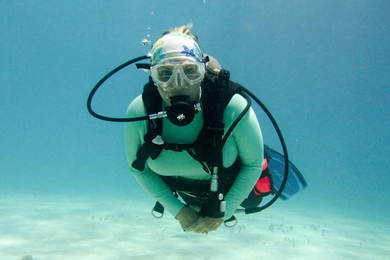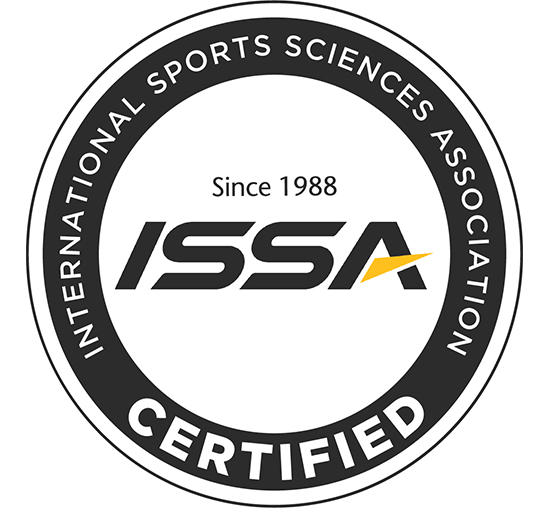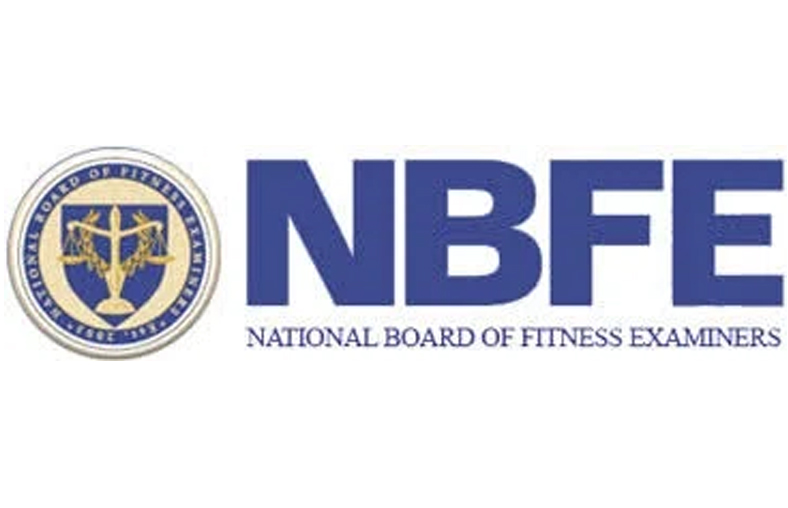About ScubaFit®
 Gretchen M. Ashton, CFT, SFT, SFN, SSC, NBFE, is an advanced scuba diver, nitrox diver, paddler, sailor and fitness professional. She is registered with the National Board of Fitness Examiners, is an International Sports Sciences Association Preferred Education Provider and Elite Trainer which includes credentials as a personal trainer, specialist in fitness therapy, specialist in fitness nutrition and specialist in strength and conditioning. As a lifetime drug free strength athlete Gretchen set 21 World and American records and is the second woman inducted into the AAU Power Lifting Hall of Fame.
Gretchen M. Ashton, CFT, SFT, SFN, SSC, NBFE, is an advanced scuba diver, nitrox diver, paddler, sailor and fitness professional. She is registered with the National Board of Fitness Examiners, is an International Sports Sciences Association Preferred Education Provider and Elite Trainer which includes credentials as a personal trainer, specialist in fitness therapy, specialist in fitness nutrition and specialist in strength and conditioning. As a lifetime drug free strength athlete Gretchen set 21 World and American records and is the second woman inducted into the AAU Power Lifting Hall of Fame.
Gretchen is founder of ScubaFit LLC, and developed the ScubaFit®, FitDiver®, DiveFit® and SurfWalking™exercise programs for divers, instructors and water sports enthusiasts. She co-authored the PADI ScubaFit® Diver Distinctive Specialty, designed FitDiver® mobile fitness apps and publishes FitDiver® Magazine.
She shares her fitness message with the diving community as a mentor with Water Women Inc., an Expert Speaker for Los Angeles County Scuba Advanced Diver Program and Underwater Instructor Certification Course, on Scuba Radio and Dive Zone Radio, at the Scuba Show, U.S. Dive Shows, and dive medicine conferences. Her writing includes Fitness Editor or contributor for World’s Best Dives, Unified Team Diving Journal, California Diver Magazine, X-Ray Mag, Scuba Sport Magazine, Alert Diver United States and Asia-Pacific, Divetime.com, ScubaBoard, Scuba Fitness Examiner at Examiner.com and her FitDiver® blog.
Gretchen has been featured as a guest on Jill Heinerth’s Into The Planet Blog, interviewed by PADI® as part of their Women in Diving series, recognized in the President’s Council of Physical Fitness and Sports newsletter for inspiring and innovative accomplishments in fitness and in the Margaritaville Key West website culinary column.
Founder of ScubaFit LLC
ScubaFit®, FitDiver® and DiveFit®
Co-Author, ScubaFit® Diver Course
FitDiver® Mobile Apps for Scuba Diver Fitness
FitDiver® Magazine
Advanced Diver
Nitrox Certified
Fitness Editor, Contributor and Author
California Diver Magazine
Florida Diver Magazine
Scuba Diving Resource
Scuba Diver Life
X-Ray Mag
DiverWire / DiveNewsWire
Scuba Sport Magazine
Alert Diver U.S. / Asia-Pacific
Examiner, ScubaBoard
DiveBuddy, DiveTime
World’s Best Dives
Unified Team Diving Journal
Elite Trainer
International Sports Sciences Association
Preferred Provider, Personal Trainer
Specialist in Fitness Therapy
Specialist in Fitness Nutrition
Specialist in Strength and Conditioning
Personal Trainer
National Board of Fitness Examiners
Expert Speaker
Los Angeles County Scuba Advanced Diver Program
and Underwater Instructor Certification Course
Scuba Show, Long Beach, CA
Scuba Radio
U.S. Dives Shows, Phoenix and Dallas
Dive Zone Radio
AAU World Champion, Hall of Fame Athlete
21 World and 21 American Records in
Drug Free Power Lifting
Membership
Water Women Inc. – Mentor
Dive Equipment & Marketing Association
Team and Corporate Training
Taking Flight DISC Training








The ScubaFit® Story
BY: MICHAEL BEAR
Michael Bear is a PADI Master Diver with over 1000 cold-water dives in California who has been diving in the San Diego area for over a decade. He is also an active Science Diver with American Academy of Underwater Sciences (AAUS) and is Science Diving Editor for California Diver Magazine. He lives and works in San Diego.
Gretchen M. Ashton, CFT, SFT, SFN, NBFE, is registered with the National Board of Fitness Examiners. An advanced diver, nitrox diver, co-author of the ScubaFit® Diver Course, an International Sports Sciences Association Elite Trainer, including personal trainer, fitness therapist and nutrition specialist, and a world champion athlete. Gretchen developed ScubaFit® and the Comprehensive FitDiver® program.
She is a current Carlsbad Examiner in Scuba Fitness and also a contributor to California Diver Magazine.
I caught up with her recently to ask her about her professional life and how she managed to achieve so much success in the world of diving fitness training.
Q: You are a long-time resident of California as well as owner of and founder of ScubaFit® and FitDiver®, and an Advanced Diver. You are also an Elite Trainer with the International Sports Sciences Association, a personal trainer, a specialist in Fitness Therapy, and a Hall of Fame Athlete, to name only a few of your qualifications. How did all this come about for you? How did you get your start in Scuba fitness?
A: Curiosity. As a fitness professional since 1996 and a diver since 2001, I was naturally curious about fitness for diving. Initially, I set out for my own satisfaction to source and summarize scientific research in order to formulate basic exercise protocols specific to scuba diving. In the process I discovered the need for a greater awareness of the importance of physical fitness and health among divers. This particularly included a clear understanding of how much and what type of exercise is individually most beneficial in life and for sport diving. My earliest general recommendations were to adopt the exercise and nutrition protocols of the American Heart Association and the American College of Sports Medicine. Since then I have worked to bridge the worlds of diving and fitness by developing specific exercise programs and nutrition guidelines that address the health of the diving community and improve diving performance. These specifics include dispelling myths, writing articles and publishing workouts that are inspired by diving experiences, and translating research and answering questions about fitness and health from divers. Fortunately, I enjoy writing and have been presented opportunities to share my passion for diver health. Interestingly, although I have many published articles now, the very first workout I developed for divers, ‘Are you scuba fit?’ was recently published for the first time in X-Ray Mag.
Q: Obviously being fit is important for divers. We frequently read of fatal diving accidents where the diver in question was overweight or out of shape or not diving within their limits. This may seem like an obvious question, but do you believe these type of fatalities can be reduced by divers being more fit and having a regular fitness program?
A: Yes. When discussing how to prevent diving deaths, we always have to consider the events of the dive along with the unique combination of proper training, the health of the individual diver, and the stresses of the underwater environment. For the most part, we rarely know all of the circumstances surrounding a dive fatality. What we do know is that a review of Divers Alert Network annual reports revealed that the most prevalent medical conditions reported by divers are heart disease/cardiovascular illness, high blood pressure, obesity, diabetes, smoking, asthma and allergies. For example, in the 2008 DAN report that summaries data from 2006, DAN investigated 75 dive fatalities in the United States and Canada. According to the report, 73% of the victims were overweight or obese (using BMI), 38% had a history of heart disease and 28% had cardiac related conditions at the time of their demise. The case studies also include high blood pressure, diabetes, smoking, asthma, and the use of allergy medications. If we step back for a broader view, what we see is divers who died actually had the medical conditions that are reported by the dive community. First and foremost, ScubaFit® is designed to address and improve the health of every diver. Secondly, the FitDiver® program helps improve diving performance. Hopefully, this combination makes a positive difference. Exercise is the great equalizer and scuba diving is a great motivation. Physical activity helps prevent, reverse and/or manage high blood pressure before it leads to heart disease, cardiovascular illness, high cholesterol, diabetes, obesity, asthma, and allergies, aids in smoking cessation, and so much more. Participation in a balanced fitness program can improve the overall condition of the body with increased strength, flexibility, aerobic capacity, and helps maintain a healthy body composition. Divers of all ages can improve diving performance, add longevity to their scuba lifestyle and live healthier, happier lives.
Q: What role does diet play in a diver fitness program? Should divers watch what they eat?
A: Yes. Nutrition is an important element of every fitness program. For divers, nutrition first addresses health and then performance. Greater success comes from understanding how to fuel the body for the tasks at hand and then eating accordingly. A beginning exercise for monitoring how much food to eat is to look ahead three hours and determine what type of physical activity is planned. If a diver is planning to sit at a desk their meal might be smaller than it would if they were going for a bike ride. The type of food is as important as the quantity. On diving days, and depending on the type of diving, divers can actually eat and drink to fuel diving activities and aid in optimal physiological responses. Diving has a unique set of energy expenditures that provide guidelines for carbohydrates, protein and fat intake. The good news is that the ratios for diving also work for fat loss so divers can sometimes combine their nutrition goals.
Q: Explain your ScubaFit® Diver Course. What does that involve and why is it important for divers to take it?
A: The ScubaFit® Diver Course is a fitness and nutrition certification for divers. The course takes 8-10 hours to complete, includes a 50-page manual and a workbook. A combination of lecture and practical application, divers learn what fitness for diving means, they evaluate their current health and fitness status, relate it to the type of diving in which they participate, and gain an understanding of where and how they can safely enter into a fitness program. Divers are provided with the tools to move forward on their own and/or seek assistance from their physician, fitness professional or other support. Nutrition and hydration for diving is also part of the course. Divers already participating in a regular fitness program, athletes, and those injured or with orthopedic challenges learn how to tailor their training toward performance or rehabilitation. To keep all divers motivated with workouts beyond the beginner level and for variety, I have developed a series of FitDiver® mobile fitness applications.
Q: You’re not a doctor, of course, but what regimen do you recommend for divers with high blood pressure? Is it an acceptable risk for divers?
A: Aerobic exercise has the greatest immediate positive effect for high blood pressure followed by changes in diet. However, divers with high blood pressure will want to “ease-in” to exercise under the supervision of a physician. Considering the benefits of aerobic exercise, the known prevalence of high blood pressure in the diving community and the stresses of the underwater environment, aerobic exercise is the first fitness priority for divers. Here is a link to my article Heads Up: Considerations for Divers with High Blood Pressure, published in Alert Diver U.S. and Asia-Pacific. If controlled properly, moderate high blood pressure does not compromise fitness to dive. If blood pressure remains high despite treatment or if it is erratic, diving should be avoided. It is most important for divers to know that exercise can prevent, reverse and help manage high blood pressure.
Q: You have worked with divers who are cancer survivors. What benefits have they seen?
A: My personal observations are consistent with the American Institute of Cancer Research (AICR) findings that, “Physical activity is an essential part of good health. People who are active over a long period of time are at lower risk for many types of cancer. For cancer survivors, studies suggest that exercise is beneficial in improving quality of life and long-term prospects for survival.” AICR goes on to report that ”Cancer survivors, especially those diagnosed with early-stage prostate and breast cancer, are at heightened risk of cardiovascular disease years following their diagnosis. The condition is caused by chemotherapy and other cancer therapies that can damage the cardiovascular system. Recent research suggests that cancer patients who participate in a structured exercise program during chemotherapy (a practice commonly prescribed to heart patients) may reduce the harmful effects of chemotherapy on the cardiovascular system, and therefore may reduce the risk of cardiovascular disease, years after treatment.” Particularly worth mentioning is the finding that exercise helps to ward off depression among cancer survivors.
Q: In your opinion, is Body Mass Index (BMI) a useful tool for divers to measure their fitness?
A: No. Body Mass Index (BMI), a formula of height and weight, was developed in the 1800’s by Arthur Quetelet to classify sedentary individuals and was not intended to measure fitness. It became recognized in the U.S. in 1972 as a result of a paper written by Ancel Keys on population studies. In 1998 the National Institutes of Health modified (lowered) BMI guidelines reclassifying 25 million Americans from healthy to overweight. Using BMI guidelines one in every four adults in the U.S. are obese and another 2/3 are considered overweight. BMI also penalizes individuals with more lean body mass. For example, Kobe Bryant at 6’6” and 220 pounds is classified as overweight, lean Shawn Merriman of the San Diego Chargers at 6’4” and 265 pounds is classified as obese, and the totally ripped body builder Jay Cutler at 5’9” and 265 pounds is classified as morbidly obese. Most divers who want to lose weight actually need to lose body fat and many need to not just keep the muscle they have but train for more. Research states that younger, slimmer, or more aerobically fit divers produced fewer bubbles compared with older, fatter, or poorly fit divers. Calculating body composition is the best way to track relative change, determine if the exercise and nutrition program is working or being adhered to, and find motivation with measurable results. In presentations to dive instructors I discuss how important it is to avoid misjudging. While there are obvious outward visual signs of unhealthy lifestyles in divers, forming opinions of physical fitness for diving using external appearance alone can lead to overlooking serious health problems in many divers. Physical fitness for diving is best determined by the lifestyle, activity level and medical condition of the individual diver. It is prudent to think about what you cannot see when evaluating physical fitness for diving.
Q: What is a ‘scuba fit’ diver?
A: A ‘scuba fit’ diver is a diver who practices a healthy lifestyle with regular fitness and good nutrition. These good habits are performed with an understanding of the health benefits of exercise and its potential to reduce the risks and injuries associated with the stresses of the underwater environment and enhance performance for scuba diving activities.
FitDiver: [fit-di-ver] – a person who strives and achieves the required level of fitness in order to stay underwater for long periods of time and adapt to the elements presented. www.fit-diver.com
Q: Is there an upper age limit for diving, or does it depend on the diver’s fitness level?
A: I am not aware of any upper age limit for diving. The current life expectancy in the United States is more than 78 years. A diver certified at 20 years of age has the potential for more than 50 years of scuba diving. During this diving lifespan many biological changes will occur. Beginning in early adulthood all body systems begin to lose capacity; muscle strength decreases, cardiovascular capacity diminishes, and body composition changes. Clearly, illness should not be confused with aging, however, changes in the body due to aging are of great concern when combined with illness, injury or a sedentary lifestyle. There are many theories of aging, but only physical activity is wholly agreed to reverse the effects of aging. As with diving and any activity, there are risks associated with exercising. Fortunately the benefits of a fitness lifestyle far outweigh the risks associated with exercise and greatly reduce the risks associated with diving. As the body ages, workouts can be modified to minimize risk and maximize results. A fitness lifestyle may extend biological health by as much as 20 years. The sooner divers begin a physical fitness program the greater the benefits and all divers can improve their health at every age.


